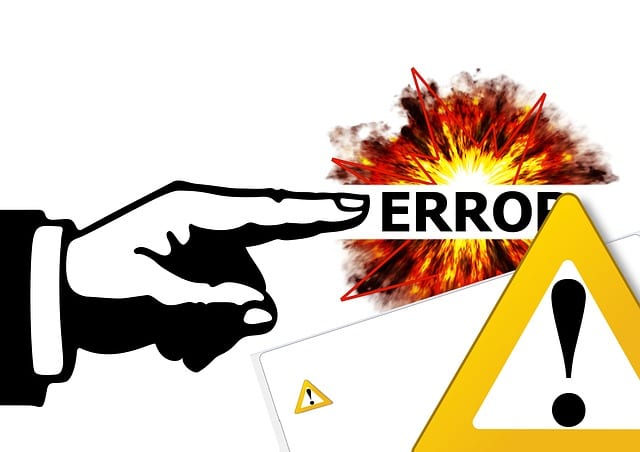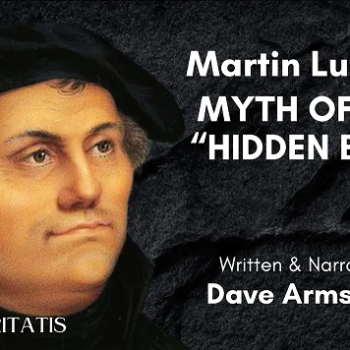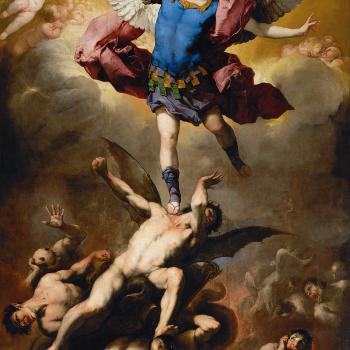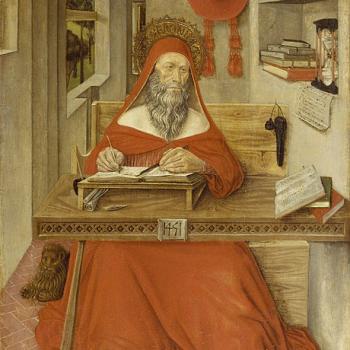
Atheist and sometimes sparring partner Jonathan MS Pearce announced a book on this topic:
Here is a list of contradictions, differences and speculations found in Paul’s writings, the Gospels concerning the Resurrection accounts, and Acts, taken from Michael J. Alter’s tour de force, The Resurrection: A Critical Inquiry [UK]. This is a comprehensive list well worth perusing and checking out further. . . . There are 120 “Differences and Contradictions” and 217 “Speculations”. Please check the thorough work he has done on them in his magnificent book.
Mr. Alter is an adherent of Judaism, who specializes in countering Christian theology and apologetics. Pearce then listed all 120 alleged “contradictions.” I replied in the combox:
Cool! Something else for me to work on refuting. I wish there was a bit more information under each one, but can’t have everything.
He wrote back: “His book is well worth getting.” I noted:
I’ve already refuted many of these:
“Three Days and Nights” in the Tomb: Contradiction? [10-31-06]
Dialogue w Atheist on Post-Resurrection “Contradictions” [1-26-11]
Seidensticker Folly #18: Resurrection “Contradictions”? [9-17-18]
Seidensticker Folly #57: Male Witnesses of the Dead Jesus [9-14-20]
Pearce’s Potshots #13: Resurrection “Contradictions” (?) [2-2-21]
Pearce’s Potshots #14: Resurrection “Contradictions” #2 [2-4-21]
Seidensticker Folly #31: Jesus’ Burial Spices Contradiction? [4-20-19]
Madison vs. Jesus #12: Discipleship & Jewish Burial Customs [8-8-19]
Seidensticker Folly #15: Jesus’ Ascension: One or 40 Days? [9-10-18]
Death of Judas: Alleged Bible Contradictions Debunked (vs. Dave Van Allen and Dr. Jim Arvo) [9-27-07]
12 Disciples of Jesus: Alleged Contradictions Debunked [12-9-06]
Seidensticker Folly #30: Small vs. Great Commission? [10-26-18]
Seidensticker Folly #48: Peter’s Denials & Accusers [8-31-20]
I shall make [mostly, with a few notable exceptions] brief responses to many of the 120 “Differences and Contradictions” (in blue). With the help of the Google Books page for this book I can find out what he was trying to argue in the vague titles.
Differences and Contradictions
- #1: The Year Jesus Was Crucified
Honest folks (including orthodox Catholics and traditional Protestants) disagree on this matter, and Mr. Alter surveys the debate in his book (see the Google Books link I provide above), but — in any event — Catholic apologist Jimmy Akin provided what I think is a solid and plausible case from the Bible that the date was 33 AD (or CE).
- #2: The Controversy Regarding the Garments
Alter argues that many people (“Most of the crowd” in Matthew 21:8, RSV) laying down their garments before Jesus on Palm Sunday makes no sense because these were often the only clothes the poorer people (who were numerous) had. But he himself notes more than once that the clothing at this time in Israel usually had an inner layer (shirt or tunic) and an outer cloak (abba, or himatia in Greek). It seems a rather weak objection: lots of people spread out their “jackets” in effect. No biggie: especially not in a hot climate. I don’t see that this is immediately questionable as an accurate account on these grounds.
- #3: Nisan 14 or Nisan 15
Catholic apologist Jimmy Akin proved from the Bible that Jesus’ crucifixion and death occurred on 3 April (Nisan 15) 33 AD. See also, “April 3, AD 33: Why We Believe We Can Know the Exact Date Jesus Died” (Andreas J. Kostenberger, First Things, 4-3-14), and Lori Eldridge, “What Day of the Week Was Jesus Crucified?”
- #4: The Last Supper as a Passover Meal
Yes it was, as shown by Fr. William P. Saunders on the Catholic Straight Answers site. See also, Jimmy Akin: “Was the Last Supper a Passover Meal?”
- #5: The Wrong Name in Mark 14:12
Christian philosopher and historian Bill Fortenberry solves this alleged “problem.”
- #6: The Day of the Week Jesus Was Crucified
Jimmy Akin and Andreas J. Kostenberger proved from the Bible and history that it was on a Friday.
- #7: John Contradicts Mark
This has to do with the exact time of the crucifixion. Jimmy Akin deals with that, too.
[#8, #10, and #11 are too vague to know what the skeptical claims are and are inaccessible in the Google Book version. #9 is too involved and complex for a brief answer to suffice]
- #12: When Jesus Spoke His Last Words
Explained by Dr. Ralph F. Wilson, “Simple Harmony of the Crucifixion Accounts (NIV)”.
[#13 and #15 are vague and are inaccessible in the Google Book version]
- #14: Contradictory Narratives Regarding the Veil
Eric Lyons of Apologetics Press ably refutes this.
[#15 to #17 are vague; not sure of the meaning of #18 and I don’t want to guess; all are inaccessible in the Google Book version]
- #19: Topography versus Matthew: The Centurion Could Not View the Tearing of the Temple’s Veil
Matthew never claims that the centurion saw the temple veil tearing. Matthew 27:54 (RSV) states:
When the centurion and those who were with him, keeping watch over Jesus, saw the earthquake and what took place, they were filled with awe, and said, “Truly this was the Son of God!”
The temple veil was mentioned four verses earlier. “What took place” doesn’t have to refer to absolutely everything. It simply means (in what I submit is the obvious, straightforward, common-sense interpretation) what the centurion saw in front of him, including an earthquake and an eclipse (27:45). That’s more than enough to seem to him to be divine signs. It’s quite a desperate argument.
[#20 is too vague to understand without further elaboration and is inaccessible in the Google Book version]
- #21: The Differing Accounts of the Women at the Cross during the Crucifixion
This appears to be about whether the women stood “by” the cross [what is interpreted as very close] (John) or at a “distance” (Matthew, Mark, Luke). It comes down mostly to meanings of Greek words, but also to the element of time and the nature of an actual contradiction. The “difficulty” is disposed of at The Domain for Truth website.
- #22: The Prophetic Fulfillment Is Omitted in the Synoptics
A specific omission in one or more Gospels is an “argument from silence” and proves absolutely nothing. This is assuredly not a contradiction, by its very nature, and thus requires no further consideration. I suppose he could say this was one of the “differences” rather than “contradictions” (per his subtitle).
If so, I reply: “then how is it relevant to your project if it doesn’t involve a contradiction?” Who cares that one Gospel mentions something that the others didn’t? Are we to believe that all four Gospel writers must be absolutely clones of each other, or else we will hear the cry of “contradiction!” every time the slightest (non-contradictory) variation of any sort appears? Without a contradiction, then biblical inspiration and infallibility aren’t weakened.
- #23: Exodus 12:46 Is Not a Prophetic Verse
- #24: Psalm 34 Is Not a Prophetic Verse
It’s not that simple. The fact remains that passages in the Old Testament that, prima facie, don’t “seem” to be “prophecies” were later interpreted to be just that. And the reason is that a prophecy can have a dual application. I explained — and proved — this at length to Jonathan MS Pearce, with regard to the virgin birth: in reply to one of his attempted rebuttals of some of my reasoning. He has not counter-replied as of this writing (almost three months later). He’s a very busy person (understood; aren’t we all?). I’m simply stating the fact of non-reply thus far.
There are also some passages like Isaiah 53 that we know were considered messianic by the Jews before the time of Christ, but have since been differently interpreted (largely due, we think, to reaction against Christian messianic interpretations).
[#25 is vague and inaccessible in the Google Book version]
- #26: How Could John Know Blood and Water Exited Jesus’s Body?
By simple observation. He saw what has been verified by medical science; and this is an excellent verification of the trustworthiness and accuracy and (we also say) inspiration of Holy Scripture. A cardio-thoracic surgeon, Dr. Antony de Bono, explained it this way:
Jesus had a haemothorax, which in the stillness of the dead body, had separated out as they do into two layers: the heavier red cells below and the light watery plasma above. The haemothorax was the result of the savage flagellation.
The withdrawal of the spear would have been followed first by the red cells (blood), then by the lighter plasma (water).
The body of Jesus had been hanging on the cross, dead, for some time. Obviously the fluid must have accumulated during life by a bleeding into the chest cavity, almost certainly due to the savage flagellation.
It is well known that blood in these circumstances in a still dead body starts to separate out, to sediment, the heavier red cells sinking to the bottom leaving a much lighter, straw colored fluid, the plasma above.
When a hole is made by the spear, the red cells, which John describes as blood, gushes out first, followed by the plasma, which John saw as water.
It’s the consecutive, non-simultaneous draining of the blood first, then water, that made it easy to identify by a “lay” onlooker (with the clear fluid being accurately identified as “water”). See also, “The Science of the Crucifixion” by biologist Dr. Cahleen Shrier.
- #27: The Distorted Emotional Context of Zechariah 12
- #28: The Distorted Historical Context of Zechariah 12—Israel Is Saved
- #29: The Distorted Historical Context of Zechariah 12—Prophetic Fulfillment
- #30: The Distorted and Mistranslated Subjects of “They” in Zechariah 12:10
- #31: The Distorted and Mistranslated Subjects of “HIM” in Zechariah 12:10
- #32: The Figurative Subject of “HIM” in Zechariah 12:10
- #33: The Distorted and Understood PRONOUN of “HIM” in Zechariah 12:10
Boy, he’s giving it all he’s got for this verse, huh? As with Isaiah 53, the Jews before Christ regarded this as a messianic passage (therefore, Christians are justified in applying it to Jesus, Who is the Messiah). I did a study of this passage (among many others) way back in 1982, as one of my very first apologetics projects. Here’s what I discovered:
Zechariah 12:10-12: “They will look on me whom they have pierced.” Connection with Joel 2:28; see also Mt 24:30 and Rev 1:7. Some Jews sought to give “pierced” a figurative meaning, i.e., “grieved.” This was the view of the Septuagint also. Similar interpretation was given to Zech 13:3, where it seems even more unlikely. Elsewhere, the verb daquar is never figurative; it is always literal: Num 25:8, Jud 9:54, 1 Sam 31:4, 1 Chr 10:4, Is 13:15, Jer 37:10, 51:4, Lam 4:9. The parallel verse Zech 13:7, with its mention of the sword, gives good reason to interpret the verse literally. The Palestinian Talmud and also the Babylonian Talmud interpret the verse messianically, as do Ibn-ezra and Abravanel. Many Jews attributed the passage to Messiah ben Joseph. The Jews eventually changed the divine “Me” to “him,” even though “Me” is found in the oldest, the best, and the largest number of manuscripts.
[drawn from Christology of the Old Testament and a Commentary on the Messianic Predictions, Ernst Wilhelm Hengstenberg [1802-1869; an orthodox Lutheran and eminent theologian], translated by T. Meyer, Edinburgh: T. & T. Clark, 4 volumes, 1854-1858]
- #34: Zechariah 12: Contradictory to the Olivet Discourse
Interpretation of prophecy is a very complex area, and prophecy can have dual applications and “time-compression” (what is also known as “telescoping), and (strange, to our modern thinking) a different conception of chronological elements, as I have written about:
“Difficulty” in Understanding the Bible: Hebrew Cultural Factors
These are known and studied phenomena of ancient Jewish thought and literature. Therefore, passages (from both testaments) can sometimes address both the first and second comings of Jesus more or less together in what we perceive as a “jumbled” fashion.
[#35 and #36 are too vague and are inaccessible in the Google Book version]
- #37: Who Took Jesus’s Body Down from the Cross?
The Domain for Truth website does a devastating and thorough refutation of this claim of “contradiction.”
- #38: Joseph’s Purchase of the Linen Sheets
I disposed of this in my paper: Pearce’s Potshots #15: Gospel of Matthew vs. Gospel of Mark?
[#39 is vague and is inaccessible in the Google Book version]
- #40: Archaeological Rebuttal to an Existing Garden
I’m not sure if he is referring to the so-called “Garden Tomb” (which is of an absurdly late date) or the “garden” referred to in John 19:41 or even the Garden of Gethsemane, so I can’t reply. Much archaeological evidence (some of which I have written about) confirms that Jesus’ tomb and the site of the crucifixion are located in the Church of the Holy Sepulchre.
[#41-42 are vague and are inaccessible in the Google Book version]
- #43: Luke versus Luke
Here Alter claims that in Luke 23:51 Joseph of Arimathea is cleared of any involvement in the determination of Jesus’ guilt. But he claims that Acts 13:28-29 contradicts this in making a general statement, referring to “rulers” in Jerusalem (13:27): that “they asked Pilate to have him killed” (13:28). This is straining at gnats (and that’s putting it lightly), as if broad statements about groups have no exceptions. It’s like saying, “Congress asked the President to sign Bill #157.” It obviously doesn’t imply a logically necessary unanimity (which indeed almost never occurs in Congress).
Yet this is the flimsy nature of the “argument” Alter makes, despite Luke 23:51 expressly contradicting it, in informing us specifically of Joseph of Arimathea’s opinion and action.
- #44: Conflicting Accounts
This claims that the Gospels present contradictory accounts of those visiting the tomb. I dealt with this issue in these two papers (more so the first):
Pearce’s Potshots #13: Resurrection “Contradictions” (?) [2-2-21]
Pearce’s Potshots #14: Resurrection “Contradictions” #2 [2-4-21]
- #45: Luke Contradicts Mark
He is making claims about accounts of the burial spices. I dealt with that in my paper: Seidensticker Folly #31: Jesus’ Burial Spices Contradiction?
- #46: Luke Violates the Yom Tov
- #47: The Gospels’ Violations of the Yom Tov
“Yom Tov” means “holy day.” Alter’s argument was that the Friday during which Jesus was crucified was a holy day: the first of Passover that year, and so work regarding burial preparations would have been forbidden (so he argues). But there were exceptions to this (which Jesus refers to: such as rescuing a lost sheep on the Sabbath). In the Theology Web discussion, “Joseph of Arimathea Buying Linen On Passover?” it was stated:
NT scholar Harold Hoehner [stated], “The purchases of Joseph of Arimathea were proper for necessities could be obtained on the Sabbath (and on a feast day).” His source for this is Mishnah Shabbath 23.4[:] “One may await the dusk at the limits of the techoom, to furnish what is necessary for a bride and for a corpse, and to bring a coffin and shrouds for the latter.” “By ‘techoom’ is meant the distance of 2,000 ells [7,500 feet] which a man may traverse on the Sabbath, and refers to the limits of that distance.”
Burial preparation is this type of work which is exceptional and permitted even within Mosaic Law. If it was permitted on the Sabbath, then it would be on other holy days.
[I couldn’t access the Google Book after this point in the book]
[#48-49 are too vague]
- #50: The Sanhedrin Performing Work on the Sabbath by Sealing the Tomb
This is the same invalid objection disposed of in my answer to #46-47.
[#51 is too vague]
- #52: Mark Provides No Time to Purchase the Spices
Mark 16:1 (RSV) And when the sabbath was past, Mary Mag’dalene, and Mary the mother of James, and Salo’me, bought spices, so that they might go and anoint him.
Luke (23:55-56) shows that the women bought spices right before the Sabbath. They could have also bought more on Sunday. Gill’s Exposition of the Entire Bible on Mark 16:1 observed:
[T]hey might buy more for the same purpose, after the sabbath was over: for this there was a particular market at Jerusalem (d); for we are a told, that
“there were there three markets, one by another; in the first of which were sold, all kinds of precious things, silks, and embroidered work; in the second, various kinds of fruits and herbs; and in the third, all kinds of spices.”
[(d) Jechus Haabot, p. 24. Ed. Hottinger. (e) Misn. Betacot, c. 8. sect. 6. & Barrenors in ib. T. Hieros. Beracot, fol. 12. 2.((f) Hiichot Ebel, c. 4. sect. 1.]
[#53-57 are too vague]
- #58: Apologetic Christian Sources Do Not Believe the Veracity of the Guard Episode
“Apologetic Christian Sources” (regarded en masse) are not infallible, and we have to examine what any particular one argues. Apologist Dr. William Lane Craig, who is no dummy, and has done great work in defending the Resurrection of Jesus and the biblical accounts (arguably better than anyone else has done), thinks it is quite worthy of belief, and explains at great length why he does.
[#59 is too vague]
- #60: It Is Possible that the Body Could Have Been Removed before the Stationing of the Guard
Yes, theoretically. But that’s not a textual question per se. It’s merely a cynical take on the entire scene of Jesus’ death and burial. So I see no purpose in debating it in this context.
[#61-69 are too vague to comment upon]
- #70: Luke 24:49 Contradicts Matthew 28:10
Luke 24:49 And behold, I send the promise of my Father upon you; but stay in the city, until you are clothed with power from on high.
Matthew 28:10 Then Jesus said to them, “Do not be afraid; go and tell my brethren to go to Galilee, and there they will see me.”
This is apples and oranges. The disciples did see Jesus after He was risen, in Galilee (Mt 28:16-17; Jn 21:1). So Matthew is talking about post-Resurrection appearances. Luke’s passage, on the other hand, which describes what occurred after what Matthew described, has to do with the Day of Pentecost, when the disciples received the Holy Spirit, which happened right in Jerusalem. It’s described by the same writer, Luke, in Acts 2:1-4 (cf. language of Lk 1:35; 9:1). The following passage also ties in:
Acts 1:8 “But you shall receive power when the Holy Spirit has come upon you; and you shall be my witnesses in Jerusalem and in all Judea and Sama’ria and to the end of the earth.”
In Acts 1:9, Jesus ascends to heaven. Likewise, in Luke 24:51, He ascends to heaven. Both passages are describing the same thing, and are written by the same author. No contradiction whatsoever. Matthew and Luke + Acts are talking about completely different things. But it’s fascinating that this couplet is somehow thought to be a contradiction, isn’t it?
[#71-72 are too vague]
- #73: Mary Magdalene Refutes that She Believed Jesus Was Going to Be Resurrected
I’m not sure what he is driving at here. Is it because she went to the tomb on Easter Sunday, not expecting Him to be risen? If so, we have no reason to believe that she heard Jesus talking about rising on the third day. So she could have believed it, but didn’t know when it would occur. Or her eyes were closed, just as the disciples were, until the time came (see Mt 16:21-23; 17:23, and especially Lk 18:31-34).
- #74: When Jesus Was Supposed to be Raised
I’m assuming that this is about the “raised on the third day” business. I dealt with that here: “Three Days and Nights” in the Tomb: Contradiction?
- #75: Which Women Saw the Post-resurrected Risen Jesus on Easter Sunday?
Dealt with:
Pearce’s Potshots #13: Resurrection “Contradictions” (?) [2-2-21]
Pearce’s Potshots #14: Resurrection “Contradictions” #2 [2-4-21]
[#76-78 are vague]
- #79: Matthew Contradicting Mark-Luke When Judas Was Paid
Matthew 26:14-15 Then one of the twelve, who was called Judas Iscariot, went to the chief priests [15] and said, “What will you give me if I deliver him to you?” And they paid him thirty pieces of silver.
Mark and Luke describe him being paid later on. Matthew appears to be applying what is called in Hebrew literature “telescoping” or “compression” of time. In his book, Hebrew for Theologians: A Textbook for the Study of Biblical Hebrew in Relation to Hebrew Thinking (University Press of America, 1993) Jacques Doukhan notes that in the Hebrew mind, “the content of time prevails over chronology. Events which are distant in time can, if their content is similar, be regarded as simultaneous.” (p. 206)
Craig Blomberg also took note of this:
Perhaps the most perplexing differences between parallels occur when one Gospel writer has condensed the account of an event that took place in two or more stages into one concise paragraph that seems to describe the action taking place all at once. Yet this type of literary abridgment was quite common among ancient writers (cf. Lucian, How to Write History 56), so once again it is unfair to judge them by modern standards of precision that no-one in antiquity required. (The Historical Reliability of the Gospels, IVP: 2nd edition, 2007, p. 216)
F. Gerald Downing, in his volume, Doing Things with Words in the First Christian Century (Sheffield: 2000, pp. 121-122) observed that the Jewish historian Josephus (37-c. 100 AD) used the same technique:
Josephus is in fact noticeably concerned to ‘improve’ the flow of his narrative, either by removing all sorts of items that might seem to interrupt it, or else by reordering them. . . . Lucian, in the next century, would seem to indicate much the same attitude to avoidable interruptions, digressions, in a historical narrative, however vivid and interesting in themselves.
Michael R. Licona, Baptist New Testament scholar and professor of theology, specializes in the literary analysis of the Gospels as Greco-Roman biographies. He observed in his article, “Licona Responds to Ehrman on New Testament Reliability”:
Compression was a compositional device employed on a regular basis by historians in Jesus’s day. I provide several examples of compression and other compositional devices in my book scheduled for publication this fall, Why Are There Differences in the Gospels? (Oxford University Press, 2016).
Licona, on pages 71-72, noted that Plutarch also utilized compression in his book, Antony and that his work, Pompey omits details on the same events that are included in his Antony and Caesar.
Matthew 28:2-4 is arguably another example of the same technique. Former atheist Steve Diseb elaborates on a further instance of this in Matthew:
The Cursing of the Fig Tree . . .
Matthew 21:17-22; Mark 11:11-15, 19-25.
Matthew — Jesus curses the fig tree. The withering of the tree appears to happen immediately after the curing.
Mark — Jesus curses the fig tree, but the withering happens much later after Jesus and the disciples have moved on; they don’t notice it until after the cleansing of the Temple.
As we have seen throughout the examples provided in this series, Matthew regularly shortens his telling of the events. Matthew decided to tell the two parts of the story side-by-side, instead of separating the curing and withering of the fig tree with the cleansing of the Temple between them. As we have seen throughout this series, Matthew tends to group things according to thematic reasons.
Erik Manning expands upon this aspect of Matthew’s literary style:
As philosopher Tim McGrew points out, other ancient historians have used this device, including Sallust, Lucian, Cicero, and Quintillian. (Historiae, Vera Historia 56-57, De Orateore 3.27.104-105, Institutio Oratoria 8.4) . . .
Luke wasn’t the only Gospel writer to use such a technique. Matthew used compression in the story of the centurion’s servant. He omits all remarks of the Jewish elders and the centurion’s friends who served as go-betweens in Luke’s account.
He compresses the story by leaving out these extra people and stages of the narrative. (Compare Matthew 8:5-13 with Luke 7:10) Some have tried to say this is a contradiction, but they just don’t understand compression.
Likewise, Matthew 9:18-26 compresses the story of the healing of Jairus’ daughter. Mark gives us a much longer version of the story with two different stages of development. In the first stage, Jairus’ daughter was sick to the point of death. In the second stage, the messengers come and tell Jairus that his little girl just died.
Matthew gets to the point — the daughter dies, and Jesus raises her back to life. Matthew takes 176 words (at least in our English Bible) for what Mark takes 481 words to tell us. Ehrman has tried to complain that these accounts are also irreconcilable but they’re not when we understand that Matthew is telescoping the events.
We observe for the millionth time that the Gospel writers and ancient Hebrews were not primitive simpletons. The entire Bible is very rich in literary techniques and figures of speech. Bible scholar E. W. Bullinger catalogued “over 200 distinct figures [in the Bible], several of them with from 30 to 40 varieties.” That is a statement from the Introduction to his 1104-page tome, Figures of Speech Used in the Bible (London: 1898). I have this work in my own library (hardcover). It’s also available for free, online.
- #80: Satan Being Judas’s Motivation for Betraying Jesus
Not sure what he is driving at here: maybe the fact that only Luke mentions this. For those itching to find a “contradiction” under every rock, this is a big deal. But it’s only a worthless argument from silence. Life is filled with situations of multiple causation. Satan is one cause; Judas’ own sins are another, etc. It’s not like they are mutually exclusive.
[#81: I would need more specifics in order to reply]
- #82: Matthew’s False Citation of Jeremiah’s Name
- #83: The Words of Jeremiah Were Not Prophetic
- #84: The Prophecy Attributed to Jeremiah Could Not Really Be Zechariah 11:10–13
Dealt with here: Seidensticker Folly #53: Matthew Cited the Wrong Prophet? Also with regard to #83, see: Dual Fulfillment of Prophecy & the Virgin Birth (vs. JMS Pearce).
- #85: Acts Contradicts Matthew—Judas’s Repentance
In Matthew 27:3-4, it says in RSV that Judas “repented” and said “I have sinned in betraying innocent blood.” Acts 1:16-20, in mentioning Judas’ suicide, simply doesn’t say one way or the other whether he repented or not. So it’s an argument from silence, from which nothing can be determined, as to alleged contradiction. But there is also a linguistic consideration:
The Greek word is not that commonly used for “repentance,” as involving a change of mind and heart, but is rather “regret,” a simple change of feeling. (Ellicott’s Commentary for English Readers on Matthew 27:3)
A different Greek word from that used, ch. Matthew 3:2; it implies no change of heart or life, but merely remorse or regret. (Cambridge Bible for Schools and Colleges on Matthew 27:3)
Repented himself (μεταμεληθείς). This word (differing from μετανοέω, which expresses change of heart) denotes only a change of feeling, a desire that what has been done could be undone; this is not repentance in the Scripture sense; it springs not from love of God, it has not that character which calls for pardon. (Pulpit Commentary on Matthew 27:3)
- #86: Acts 1:18 Contradicts Matthew 27:7 Regarding the Action Taken by Judas
I think — in light of #87 — that he actually means Matthew 27:5 and is discussing how Judas died (a longtime “chestnut” of anti-biblical polemics). I tackled and dismantled it over 13 years ago: Death of Judas: Alleged Bible Contradictions Debunked (vs. Dave Van Allen and Dr. Jim Arvo).
- #87: Acts 1:18 Contradicts Matthew 27:7 Regarding Who Purchased the Field
This is regarding who bought the “potter’s field”: Judas (Acts) or the chief priests (Matthew). The Domain of Truth website thoroughly refutes the charge of contradiction.
[#88 is too unspecific to reply to]
- #89: Why the Pilgrims Failed to Recognize Jesus during the Daylight
I think he is referring to the story of the disciples on the road to Emmaus, after Jesus’ death (Lk 24:13-32). I’m not sure what the exact charge is. The text says that “their eyes were kept from recognizing him” (24:16) and “their eyes were opened and they recognized him” (24:31). God kept them from realizing it was Jesus, for whatever reason. I’d like to know what Alter thinks is “contradictory.”
[#90-91 are too vague]
- #92: Peter’s Investigation of the Tomb Challenges 1 Corinthians 15:5
This is another case of apples and oranges. When Peter went to the tomb, it was empty and he didn’t see Jesus at that time (from all we know from the accounts). 1 Corinthians 15:5, on the other hand, refers to Jesus’ post-Resurrection appearances. Matthew has this occurring in Galilee (28:16), where the disciples “saw him” and “worshiped” (28:17). That is perfectly harmonious with a notion that Jesus appeared to Peter (“Cephas”: Aramaic for “Rock”) first. Likewise, the accounts in Mark, Luke, and John do not logically rule out an appearance to Peter first. So, no cigar again . . .
- #93: The Number of Disciples Who Saw Jesus
See the answer to #75 above.
[#94-101: I would need more information to know exactly what Alter is claiming. I’ve already speculated on a number of these accusations, and may have been wrong as to what he was arguing (lacking further information) ]
- #102: When the Disciples Received the Holy Ghost
John 20:22 And when he had said this, he breathed on them, and said to them, “Receive the Holy Spirit.”
This was the (then eleven) disciples only. On the Day of Pentecost, it was a group of “about” 120 new Christians (Acts 1:15). Acts 2:4 reports that “they were all filled with the Holy Spirit.” This is perfectly compatible, logically, with a notion of “the disciples first received the Holy Spirit” and then about 108 more people — present with them — did on the day of Pentecost.” Or one could hold that the act of Jesus in John 20:22 was symbolic, meant to anticipate what was soon to come, or that they received a measure of the Holy Spirit then and a fuller measure on Pentecost (suggested by the word “filled”). Any of these possible explanations are non-contradictory and plausible.
- #103: John Contradicts John—Who Will Send the Holy Ghost?
I think he has in mind passages about the Holy Spirit in John chapters 14-16, (maybe) compared to John 20:22 as well. This poses no problem for Christians, who believe in circumincession (Latin) or perichoresis (Greek): the doctrine describing how all three Persons in the Trinity are contained in each other. So it’s no problem to say that Jesus sent the Holy Spirit or that the Father did. The Gospel of John actually states the notion of circumincession in this regard:
John 14:10 Do you not believe that I am in the Father and the Father in me?
John 14:16-18 And I will pray the Father, and he will give you another Counselor, to be with you for ever, [17] even the Spirit of truth, whom the world cannot receive, because it neither sees him nor knows him; you know him, for he dwells with you, and will be in you. [18] I will not leave you desolate; I will come to you.
John 14:26 But the Counselor, the Holy Spirit, whom the Father will send in my name . . .
John 15:4-5 Abide in me, and I in you. As the branch cannot bear fruit by itself, unless it abides in the vine, neither can you, unless you abide in me. [5] I am the vine, you are the branches. He who abides in me, and I in him, he it is that bears much fruit, for apart from me you can do nothing.
John 15:26 But when the Counselor comes, whom I shall send to you from the Father, even the Spirit of truth, who proceeds from the Father, he will bear witness to me;
John 16:7 . . . if I do not go away, the Counselor will not come to you; but if I go, I will send him to you.
John 16:15 All that the Father has is mine . . .
Jesus, in effect, “sends” the Holy Spirit by praying to God the Father to send Him, and send Him in Jesus’ name. Jesus comes through the Spirit, too (“I will come to you” / “I in him”). It’s all interconnected. This is trinitarianism. The same sort of thing occurs when the Bible talks about Jesus’ Resurrection. Acts 5:30 says “God . . . raised Jesus” (cf. Gal 1:1; 1 Thess 1:10) while John 2:19 and 10:17-18 say that Jesus raised Himself. In biblical / Hebraic “both / and” thinking, this is perfectly acceptable and not “contradictory” at all.
For further elaboration on this, see the section, “6. Circumincession / Perichoresis: the Indwelling of the Three Persons in One Another” in my paper: Holy Trinity: Hundreds of Biblical Proofs (RSV Edition).
[#104-105 are too vague]
- #106: Why the Synoptic Authors Failed to Detail the Other Appearances in John
They simply are under no (logical or moral or literary) obligation to do so. Each Gospel has its own approach and emphases. And just like any other situation with multiple accounts of the same general set of events, they will differ in detail and order, etc., from each other. That’s simply the nature of multiple reports. In terms of the overall Bible (as a revelation from God), if one Gospel contains a detail that others don’t have, the others don’t have to repeat it. It’s enough. It’s the irrational “demand” that all four Gospels (in effect, judging by their rhetoric) be exactly the same, under the horrendous “fear” of being accused of “contradiction!” which is logically absurd.
- #107: Jesus’s Command to Take the Gospel to All the Nations
I think the falsely alleged “contradiction here is what I have dealt with in my paper, Seidensticker Folly #30: Small vs. Great Commission?
- #108: Mark versus Matthew—Jesus’s Command to Baptize
Mark combines baptism and baptismal regeneration (Mk 16:16) with the great commission to evangelize the world (16:15). Jesus doesn’t “command” them to baptize, but it’s strongly implied, since it is so closely tied to salvation.
Matthew 28:19 Go therefore and make disciples of all nations, baptizing them in the name of the Father and of the Son and of the Holy Spirit,
Matthew adds the famous trinitarian formula. It’s not, of course, a contradiction; rather, different emphases (regeneration and formulaic trinitarianism in the ritual of baptism). Mark says that baptism is essential for salvation, and Matthew provides the liturgical formula for the sacrament of baptism and makes a direct command. No contradictions whatsoever (if indeed this is what Alter was driving at) . . .
[#109-110 are too vague]
- #111: Luke 24:50–53 Contradicts John and Possibly Mark
Really? All the other attempts have failed. Let’s look at this one, too! He appears to be claiming a contradictory difference in the accounts of Jesus’ Ascension. I refuted this charge: Seidensticker Folly #15: Jesus’ Ascension: One or 40 Days?
[#112 is too vague]
- #113: Luke 24:51 Contradicts Luke 23:43
Apologist Eric Lyons disposes of this. I explain how “paradise” here is not referring to heaven: Luke 23:43 (Thief on the Cross): “Paradise” = Sheol, Not Heaven. See also: Multiple Meanings of “Paradise” in Scripture (and Literary Genre).
- #114: Acts 1:9 Contradicts Luke 24:43
I have no idea whatsoever what he thinks is contradictory, and so can’t comment further without knowing his full argument.
- #115: Omissions Detailing the Ascension
Omissions are not contradictions. The claim that they are is an argument from silence. Since this comes up so often, let’s examine it more closely for a moment. Wikipedia has a good article, “Argument from silence”:
To make an argument from silence (Latin: argumentum ex silentio) is to express a conclusion that is based on the absence of statements in historical documents, rather than their presence.[2][3] In the field of classical studies, it often refers to the assertion that an author is ignorant of a subject, based on the lack of references to it in the author’s available writings.[3]
Thus in historical analysis with an argument from silence, the absence of a reference to an event or a document is used to cast doubt on the event not mentioned.[4] While most historical approaches rely on what an author’s works contain, an argument from silence relies on what the book or document does not contain.[4] This approach thus uses what an author “should have said” rather than what is available in the author’s extant writings.[4][5]
An argument from silence may apply to a document only if the author was expected to have the information, was intending to give a complete account of the situation, and the item was important enough and interesting enough to deserve to be mentioned at the time.[6][7]
Arguments from silence, based on a writer’s failure to mention an event, are distinct from arguments from ignorance which rely on a total “absence of evidence” and are widely considered unreliable; however arguments from silence themselves are also generally viewed as rather weak in many cases; or considered as fallacies.
The article notes that Marco Polo never mentioned the Great Wall of China. Using the usual hyper-critical methodology applied to the Bible, this would “prove” that the Great Wall doesn’t exist (or else that he never actually visited China).
[#116-120 are too vague]
This concludes my examination. I have looked at these alleged “contradictions” and have found them all abject failures in terms of establishing what they intended to prove. Such continual abysmal failure of argument surely bespeaks a seriously deficient method and false premises (what I usually posit is the case).
***
Photo credit: geralt (4-7-13) [Pixabay /Pixabay License]
***
Summary: I examine 59 of Michael Alter’s alleged Resurrection “contradictions” from his book, The Resurrection: A Critical Inquiry. One notices the same logical fallacies recycled over and over.
***













